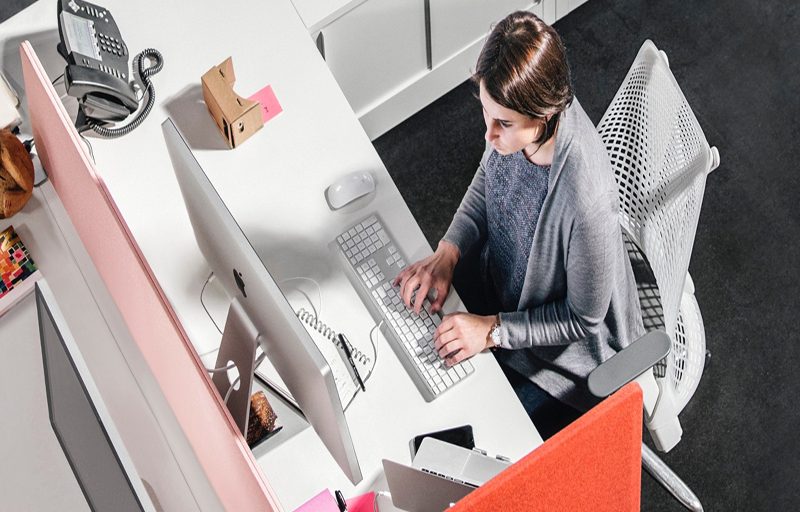From Office to Everywhere: Building the Workplace of the Future
For workplaces to remain purposeful, they must help people do their best, no matter where or when they are working. And that means the workplace needs to evolve from a singular space into a dynamic network of places from which employees can choose to work on a given day—and over the course of the week. The office will become a valued on-demand amenity that fosters the connections and interactions that we miss while working alone. It will also serve as a place that cultivates learning, preserves culture, and expresses the organization’s brand.
Many employees will work from offices daily, but for others, distributed working will be the norm. Fewer employees will come to the office each day just to check emails and attend meetings, so generic open-plan desks and traditional conference rooms will be less useful. People will seek offices with work settings uniquely tuned to socialization, individual focus, and immersive teamwork. Examples of these types of spaces include:
- Areas that will encourage people to interact with their extended networks (colleagues you don’t work with every day). Building these relationships is critical for maintaining culture and helping people feel a sense of purpose and belonging.
- Safely maintained, reservable on-site workstations. These are especially important since many people have difficulty focusing at home, especially on brain-intensive work.
- Highly interactive settings that facilitate immersive on-site collaboration. Places like these give people the time, space, and tools to solve complex problems that are difficult to address remotely.
By creating offices that fulfill people’s needs on-demand, both the organizations and their people will flourish. Because distributed work will lessen the need for dense occupancy planning, businesses will save on facilities costs and create workplaces that are more valuable to their employees. And by giving people the option to work in the place that fulfills their well-being needs and diverse work processes, they’ll have the autonomy and security they need to thrive.
Empirical data supports this approach. A Gallup study published in January 2020 indicated that employees who could choose when to come into the office and when to work from home had higher levels of employee engagement than those who spent most of their time in the office or working remotely.3 Add to the mix a well-considered work-from-home program—with supportive ergonomic furnishings and essential technologies—and you can count well-being and productivity in the list of positive outcomes.
Key Insights
- Distributed ways of working—where people are empowered to work at different times and places—aren’t new, but they’ve been accelerated by the pandemic.
- People can be productive working elsewhere, but offices still provide great value as on-demand resources for individuals and teams.
- To remain relevant, offices of the future will need to build culture and community, support individual focus, and facilitate intensive teamwork.
- The work from home experience is different for everyone. Companies should continuously strive to help people stay healthy and productive, no matter where they are working.
How Herman Miller Can Help
Whether you’re just beginning to transform your workplace or you’ve been doing so for years, Herman Miller has insights, products, and services to help your people stay productive and healthy in the office, at home, and beyond. We can help you:
- Gain insights
- Reach business goals
- Develop a work from home program
- Measure and improve strategy
- Outfit spaces with supportive furnishings
Click Here to learn more about Herman Miller, available through OMNIA Partners, today!





















